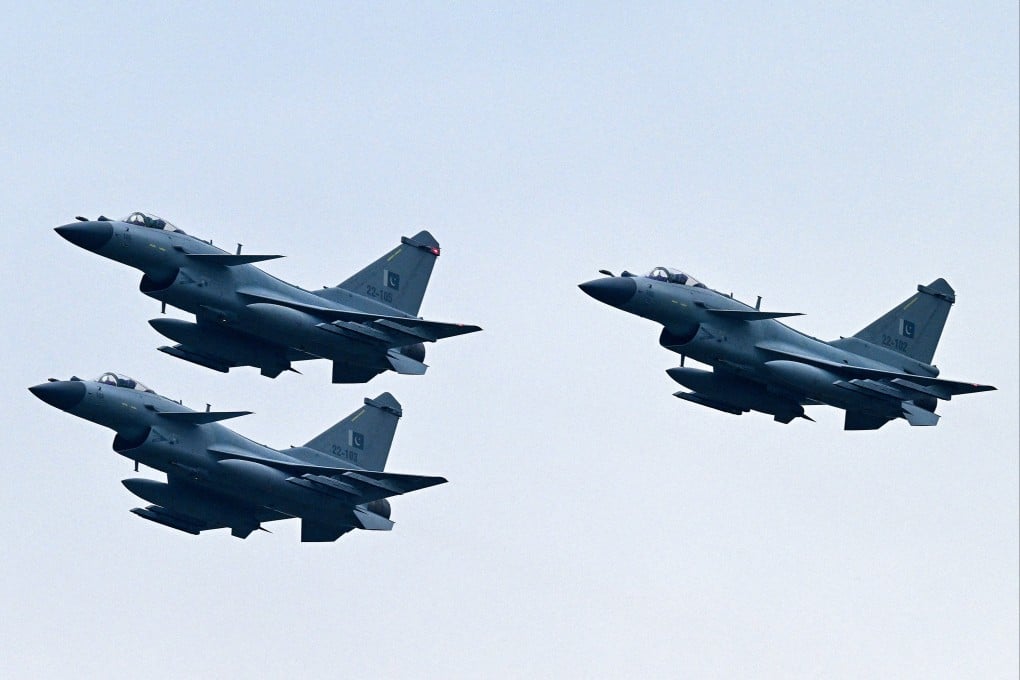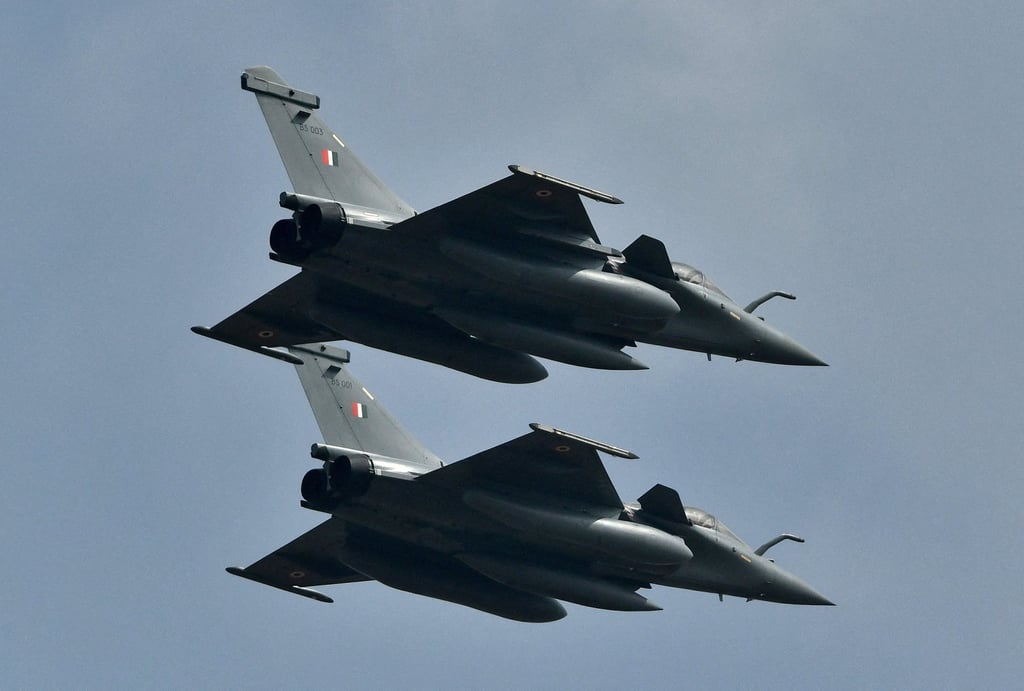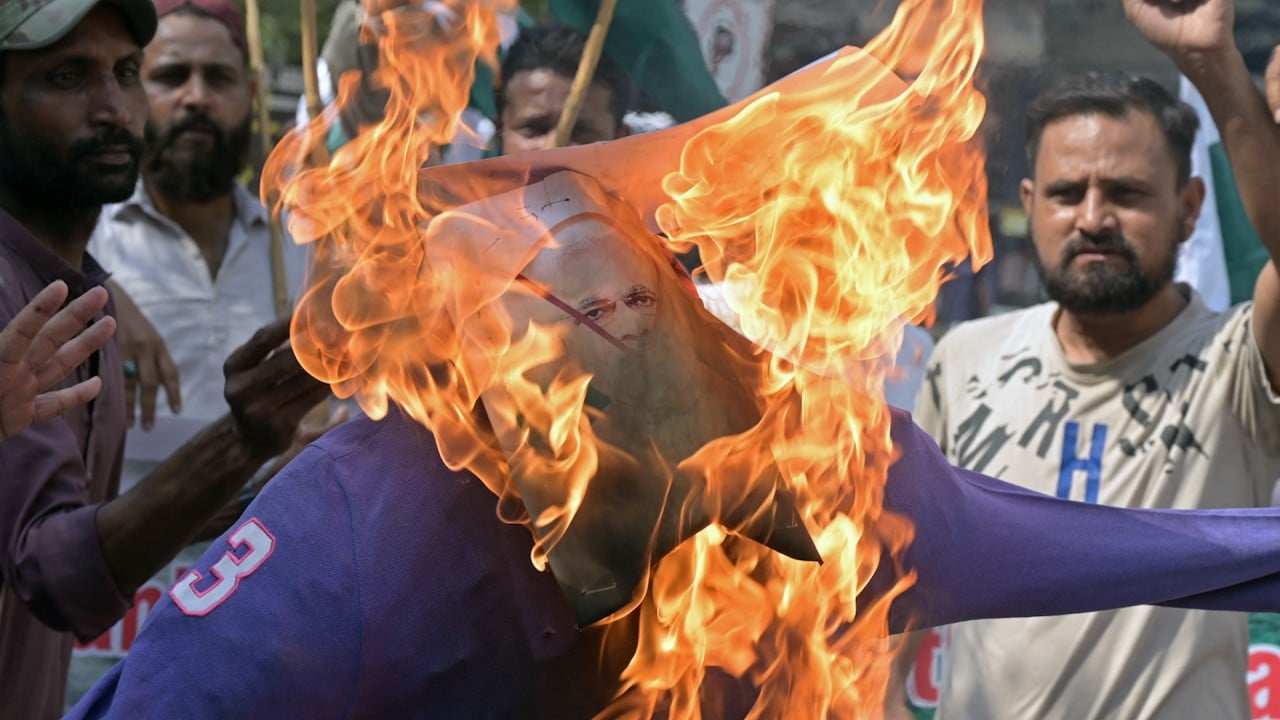
More significantly, it would signal a victory for the Chinese military asset over the Nato-standard mainstay Western fighter in its first battlefield encounter.
In contrast, the Rafale’s customers include Greece, Croatia, Egypt, Indonesia, the United Arab Emirates and Qatar. Last month, India signed a US$7.4 billion contract with France to add 26 more Rafales to its fleet.
Both the Rafale and J-10C are 4.5-generation fighters, which means they feature significant improvements on less-advanced aircraft but do not fully reach fifth-generation standard.
The French fighter is widely considered to be one of the world’s most capable aircraft in this class, but how does the J-10C compare?
The radar difference
Both the Rafale and J-10C are equipped with advanced active electronically scanned array (AESA) radars, but they differ in strength and target detection.
The Rafale uses a RBE2-AA AESA radar, which has an antenna of about 600mm (23.6 inches) in diameter and can scan an area of 140 degrees with a detection range of about 200km (124 miles).
The J-10C radar’s type has not been officially disclosed, but it is known to have a diameter of more than 700mm (27.6 inches).
This means it has a much bigger surface and more radiating array units than the Rafale, which is designed to operate on aircraft carriers as well as from bases on land, limiting the size of the radar it can house.

While the Rafale’s radar might not be the strongest and the J-10C is probably better at situational awareness, this does not take into consideration any data support from ground-based air defence radars or airborne early warning and control (AEW&C) aircraft, which could be critical in a modern air battle.
The PAF’s J-10Cs could benefit from easy data links with its other systems – which are all Chinese-made – while the Indian Air Force (IAF) may face challenges coordinating the French fighters with its Russian air defence stations and Israeli AEW&C systems.
Armaments
The J-10C’s armament capacity is much smaller. Its 11 hardpoints have a total maximum external load of 6 tonnes, compared to the IAF Rafale’s 9 tonnes, with 14 hardpoints to carry a wide range of missiles and bombs, including nuclear-capable missiles.
But it was the beyond-visual-range (BVR) missiles that were most relevant in the recent combat, with both India and Pakistan firing within each other’s airspaces according to their own accounts.
The Rafale is equipped with Meteor air-to-air missiles, which are also guided by an AESA radar seeker with two-way data link in flight. They are powered by solid-fuelled ramjet motors to reach Mach 4 with a range of up to 200km.
After the India-Pakistan air battle, debris was found which appeared to be the remains of a PL-15E. There was no evidence that any Meteor missiles were launched in what was mainly a raid on Pakistan’s ground targets by the IAF.
Some images taken by witnesses of what appeared to be the wreck of an IAF aircraft suggested that it may have been carrying a MICA infrared air-to-air missile, which has a range of only 60-80km.
Engines and manoeuvrability
The two medium-weight fighters are similar in size and comparable in many ways. Both feature a canard-delta wing design that optimises aerodynamics for manoeuvrability, lift, and stability, making them agile in high speed, close-range combat situations.
The J-10C is 17 metres long and 10 metres wide, with a gross weight of 14 tonnes, while the Rafale is 15 metres by 11 metres and weighs 15 tonnes.
The Rafale has a bigger take-off weight of 24 tonnes, compared to its Chinese rival’s 19 tonnes, while the J-10C has a higher service ceiling of 18,000 metres, while the French fighter tops out at 16,000 metres.
The Rafale is fitted with two Snecma M88 engines, each capable of providing up to 75 kilonewtons of thrust, while the J-10C’s single WS-10B Taihang engine reportedly has a thrust around 130-140 kilonewtons.
Both aircraft have a maximum speed of Mach 1.8, but the Rafale might have a slight upper hand in a dogfight.
A well-known weakness of the J-10C is its short combat range – only 550km (342 miles) on internal fuel and 1,240km with three tanks. In contrast, the Rafale’s combat range could be as high as 1,850km on three tanks.
Multirole vs specialised air combat
The Rafale’s global popularity comes partly from its flexible multirole design, which combines air superiority, ground and ship attack, reconnaissance, and nuclear deterrence capabilities, and allows it to be operated from both ground bases and aircraft carriers.
Its powerful SCALP-EG weapons – also known as Storm Shadow – are low-observable long-range cruise missiles that are capable of precision strikes at up to 550km.
The Rafale is also equipped with the Hammer (highly agile modular munition extended range) – another stand-off surface attack weapon, which can reach up to 60km, that was reportedly fired at ground targets in Pakistan in the May 7 skirmish.
The original J-10, which made its maiden flight in 1998 and entered service in 2003, was China’s first home-designed fourth-generation fighter. While it can serve as a multirole aircraft, it was not designed to compete with the Rafale in multi-functionality.
The J-10C is the most upgraded version in the series, with a better engine and more advanced avionics, which are reported to be similar or close to China’s fifth-generation J-20.
The J-10C is focused on air combat and interception for China’s homeland air defence, leaving other fighters in the PLA Air Force to do other jobs.
By relying on China’s integrated data network, the J-10C could exercise its advantages in radar and missiles, especially in BVR settings, and minimise its shortcomings in range and load capacity.
These capabilities may have been in play during an aerial stand-off between the Indian and Pakistani air forces over Kashmir overnight between April 29 and 30.
On that occasion, the PAF scrambled its J-10Cs to intercept four IAF Rafales that were patrolling near the Line of Control that divides Kashmir. Pakistan’s defence ministry claimed that electronic warfare assets jammed the Rafales’ on-board sensors and radar systems, and the Indian aircraft were “forced to retreat”.
The article appeared in the scmp

